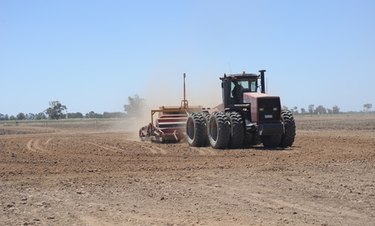
Humans have always relied on farming to survive. As civilization evolved, humans learned new and improved farming techniques, and tools and machines emerged. An air seeder machine allows consistent delivery from the seed-metering device to the seedbed via an air delivery method.
Functions
Video of the Day
Farmers use air seeders -- typically 36 feet wide -- for numerous crop functions. The advances in this machine allow completion of these tasks with one pass of the machine, letting the farmer to seed, apply fertilizer and distribute nitrogen at a desired interval. The seeder can also use attach sharp tools for digging and surface drilling.
Video of the Day
Specifications
The air seeder accomplishes direct seeding in vacant plots as well as crop remnant areas. Compressed air helps gauge the seed and fertilizer distribution by the Venturi manifolds. Seeders also use nitrogen, and as well as a tillage tool to disrupt the earth. Cultivation tools, such as a chisel, hoe or blade, allow ground penetration.
Common Uses
Commonly used in large areas of farmland, air seeders typically facilitate planting crops such as wheat and similar grains. Farmers must adjust or format seeders, depending on the type of crop planted.